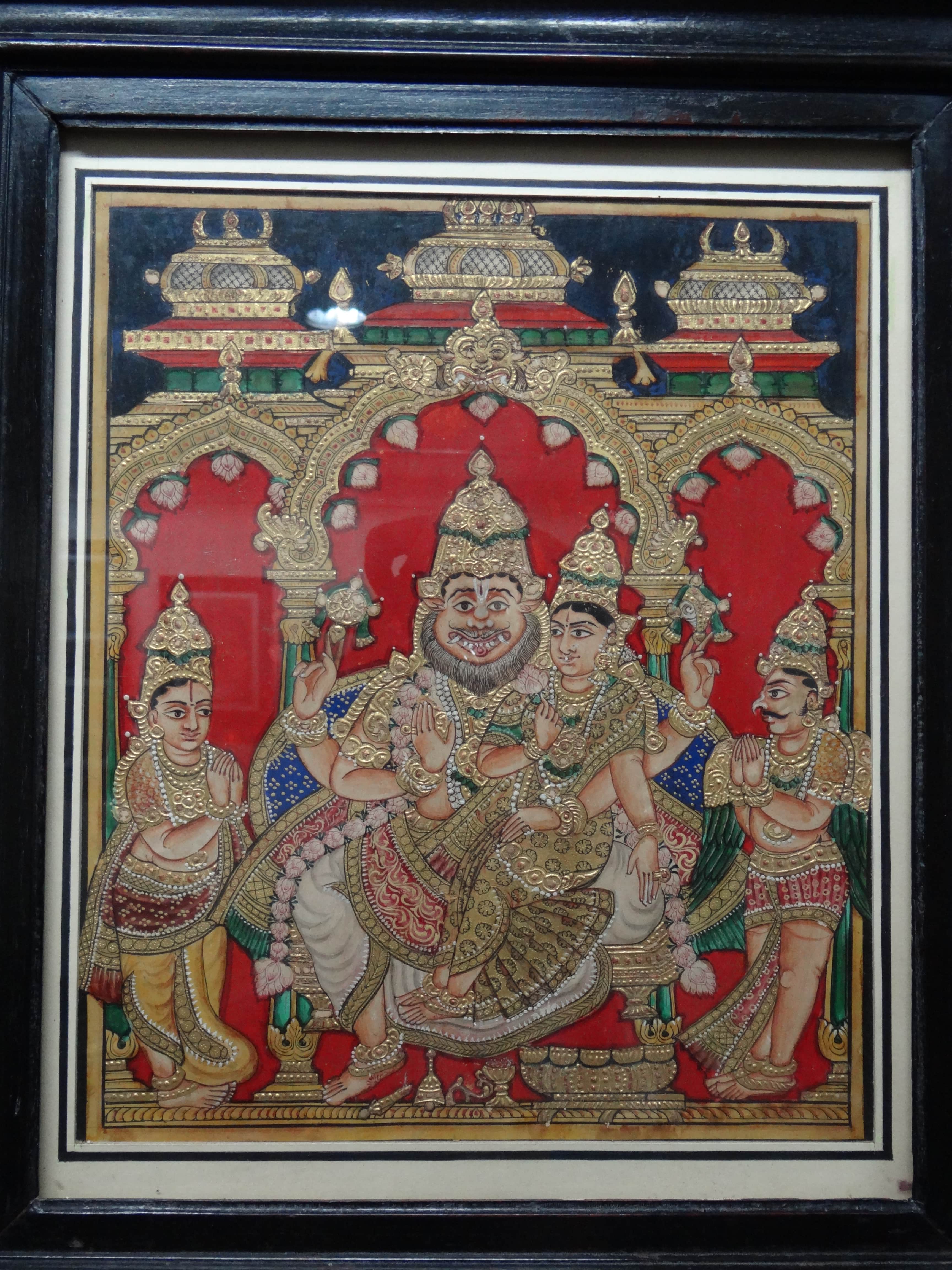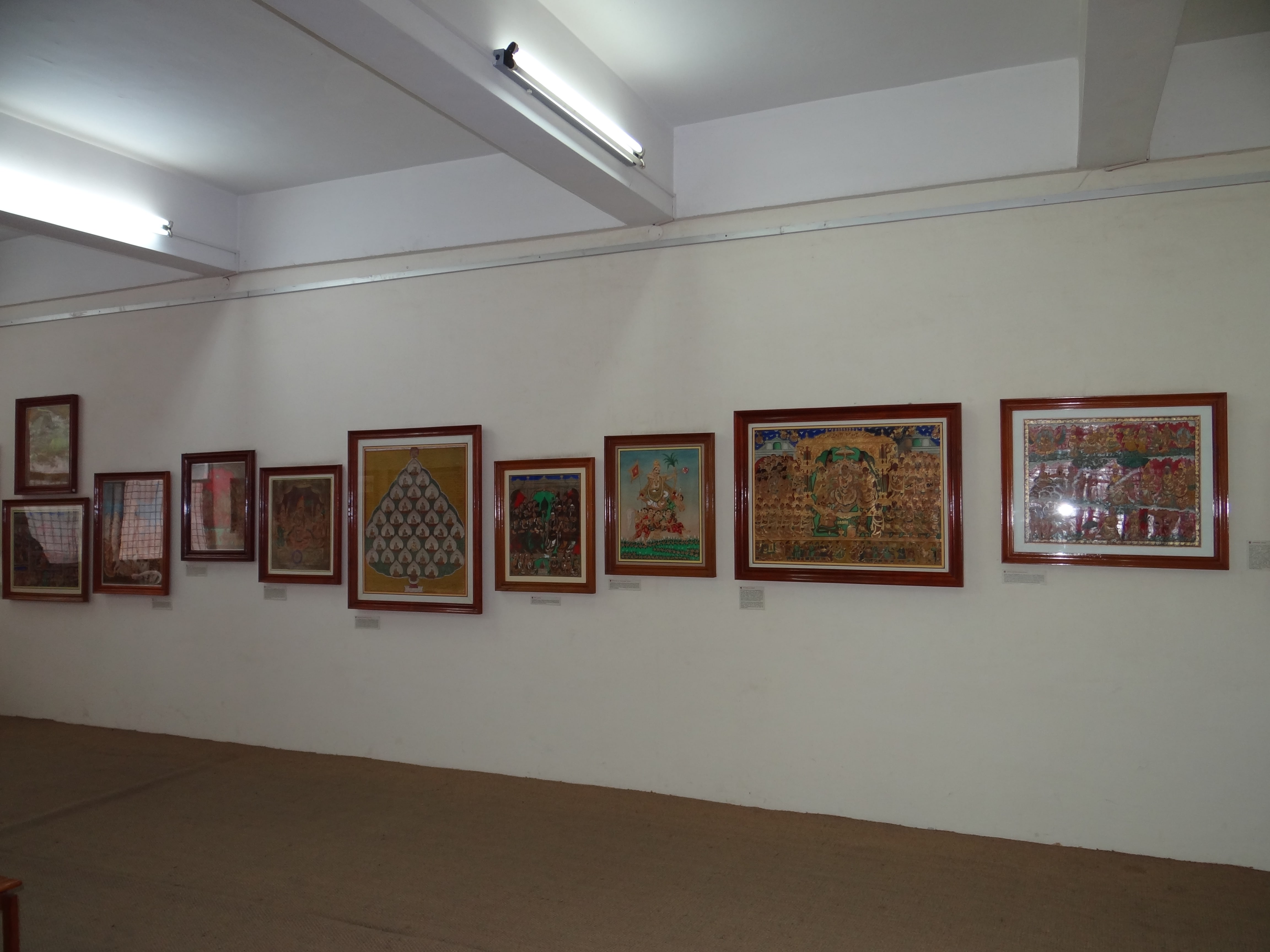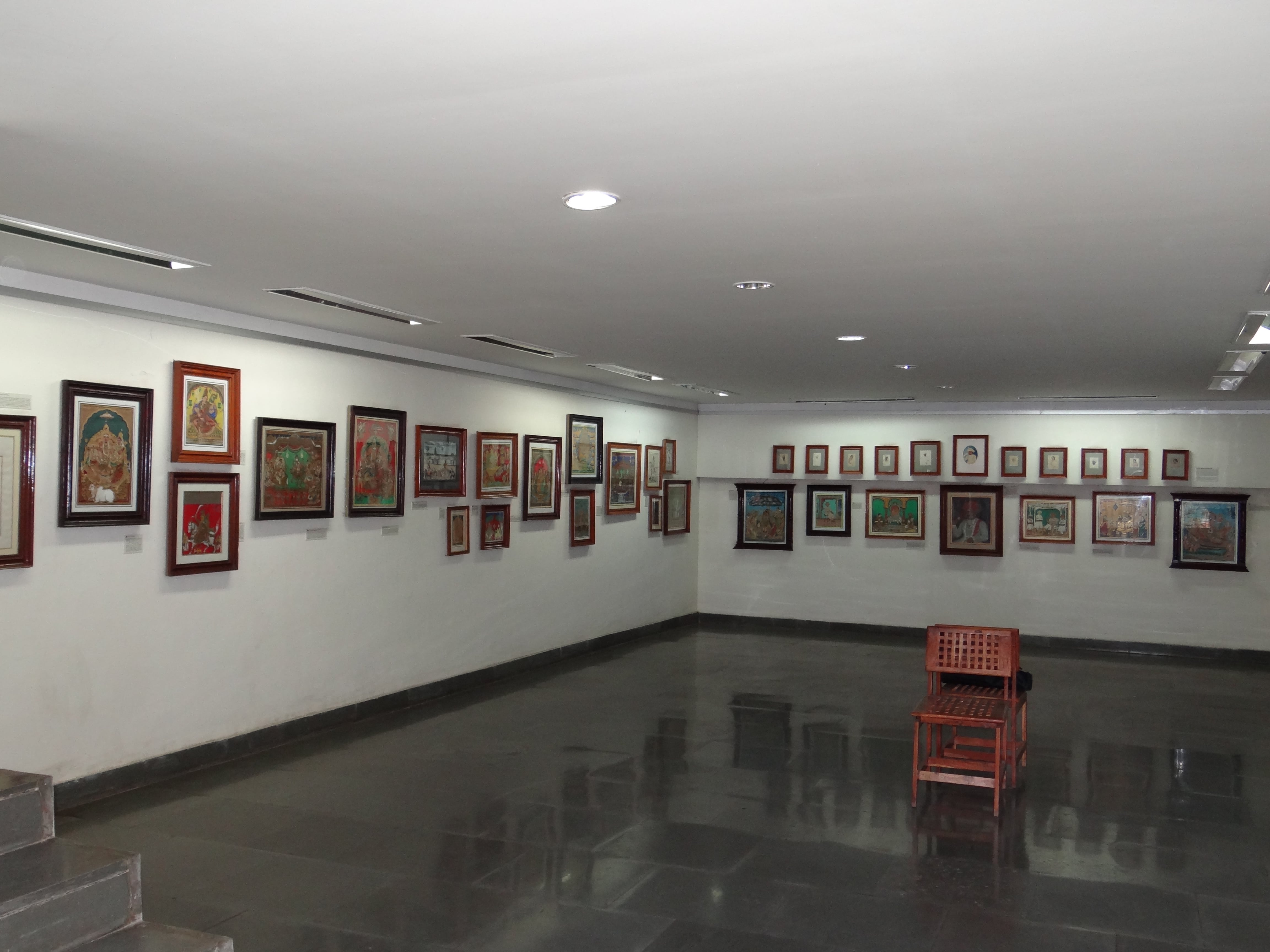PERMANENT MUSEUM COLLECTIONMysore Traditional Museum

The collection of Mysore traditional style of paintings split between two gallery spaces holds about 109 works. Dating from the 19th century, the paintings are largely representations of Mythological figures and also the Royal lineage of Mysore. Mysore painting is an important form of classical South Indian painting evolved from the paintings of Vijayanagar times during the reign of the Vijayanagar Kings (1336-1565AD). The rulers of Vijayanagar and their feudatories encouraged literature, art, architecture, religious and philosophical discussions. With the fall of the Vijayanagar empire after the Battle of Talikota the artists who were till then under royal patronage migrated to various other places like Mysore, Tanjore, Surpur and other principalities, absorbing the local artistic traditions and customs. The works in the collection of the Parishath have all been executed on specially treated paper and the colors used are mineral and vegetable dyes with the use of gesso and gold. The technique is true to textual prescriptions. There is skill displayed in innovations both in theme and technique. A highlighted piece on this floor is a genealogical chart of the Wodeyars of Mysore; also beautiful representations of Durga (Chamundeshwari), Vishnu and his incarnations, Rama and Sita, Lord Shiva and other mythological figures.


On the second level (lower) there is a painting of the Dussera procession along with a collection of dolls. Another feature of this collection is a series of fine line drawings executed in the Mysore traditional style. This style saw its crystallization during the time of Vijayanagara. It was under the patronage of Krishna raja Wodeyar III that the work achieved its unique identity. The themes of these works are usually epics and myths, associated with local histories and the epics.
